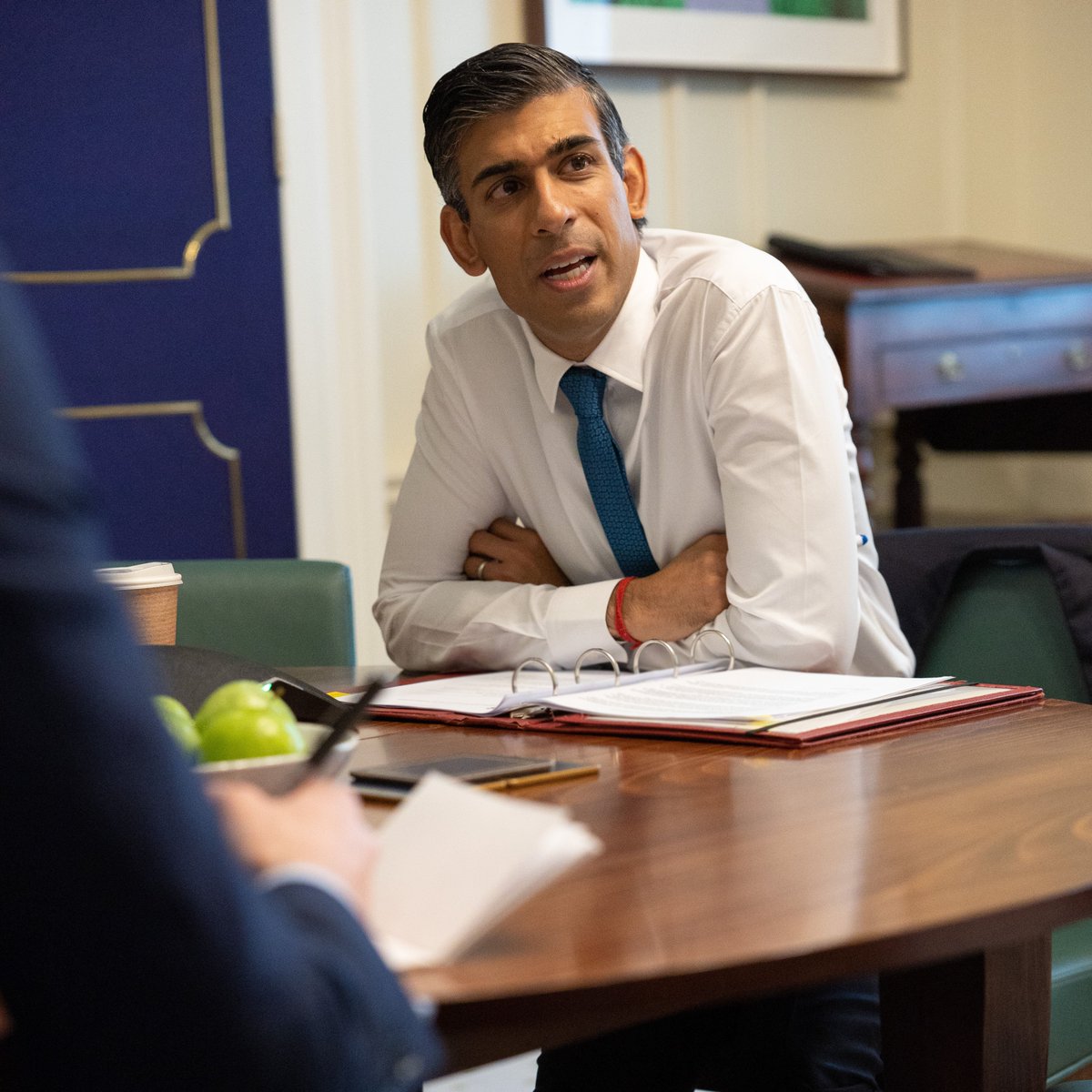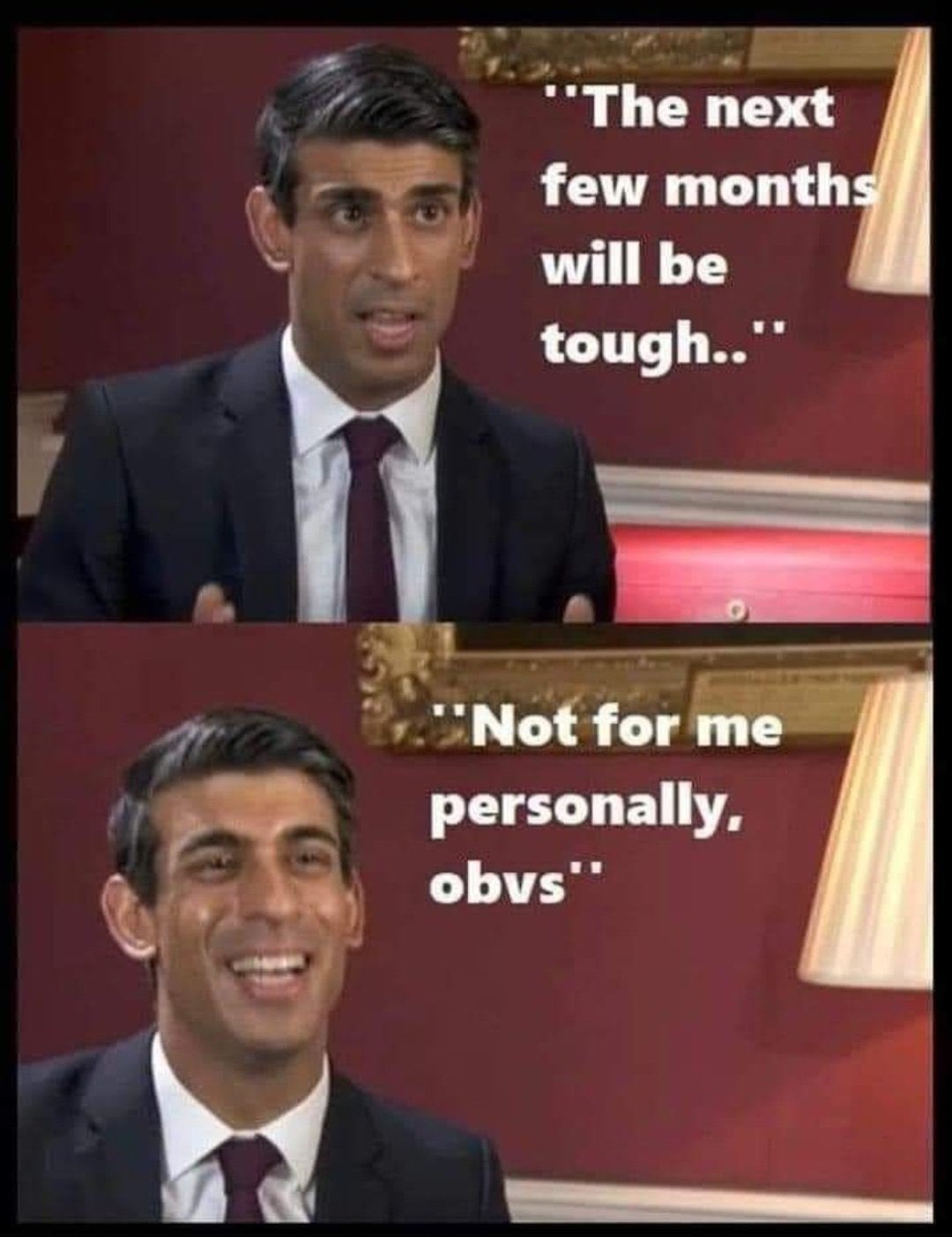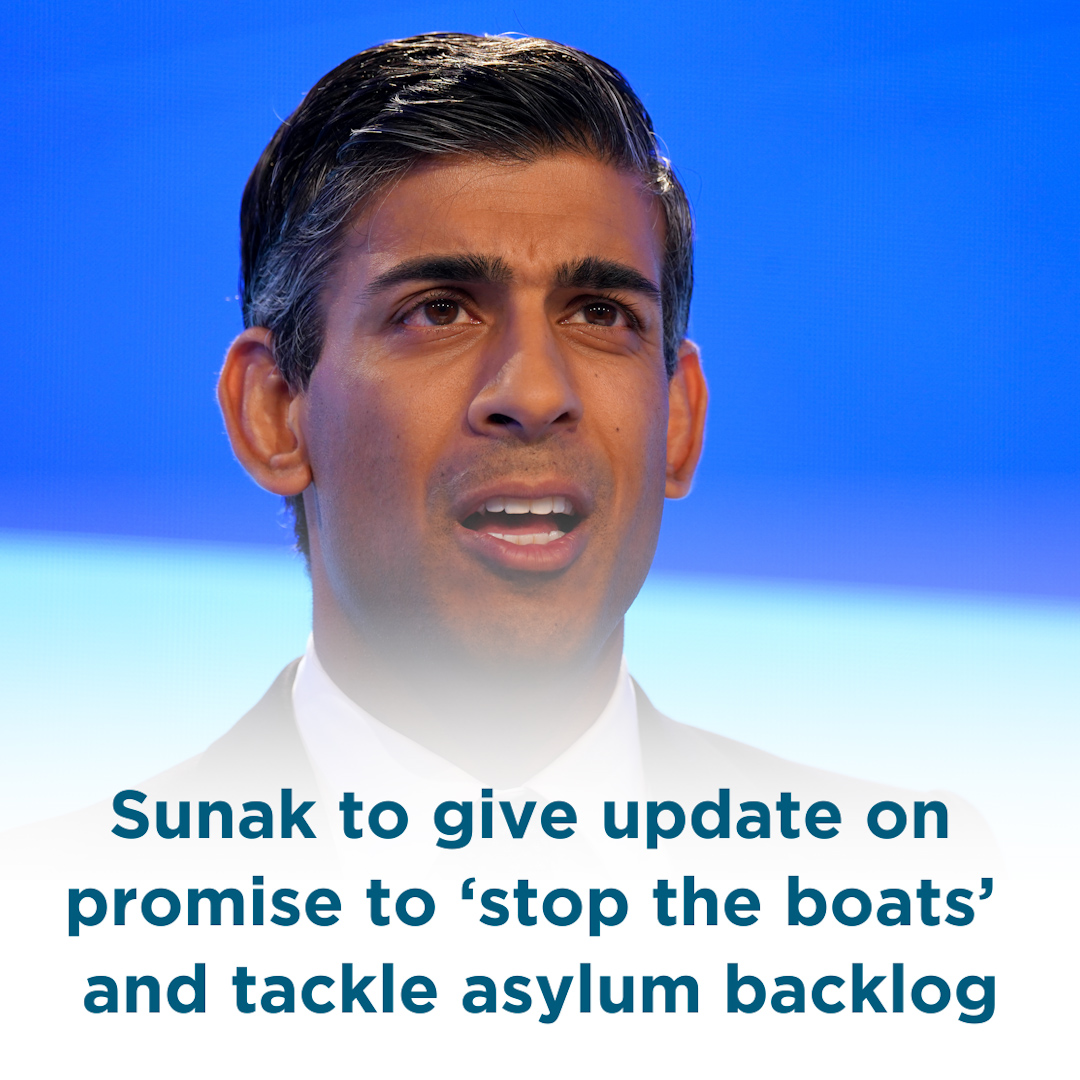Rishi Sunak Twitter: Latest Updates & Reactions Now
Is Rishi Sunak's presence on Twitter merely a performative act, or does it offer genuine insight into the policies and persona of the UK's Prime Minister? His carefully curated online image belies the complex realities of governing a nation facing unprecedented economic and social challenges.
Rishi Sunak's Twitter account, @RishiSunak, is a meticulously crafted digital stage. It's a space where policy announcements are rolled out in digestible soundbites, photo opportunities showcase him engaging with the public, and carefully worded statements address pressing national issues. However, beneath the veneer of polished professionalism lies a question that frequently echoes through the digital corridors: is it authentic? Does the carefully constructed online persona truly reflect the man leading the United Kingdom, or is it simply a sophisticated exercise in public relations, designed to project an image of competence and control in an era of profound uncertainty?
Sunak's rise to power has been anything but conventional. From his privileged upbringing and education at Winchester College and Oxford University to his lucrative career in finance, his background stands in stark contrast to the experiences of many Britons grappling with the cost of living crisis. This disparity raises further questions about his ability to genuinely connect with and understand the challenges faced by ordinary people. His Twitter feed, therefore, becomes a crucial battleground in the ongoing struggle to shape public perception and maintain political legitimacy.
- Unveiling Arena Details Guidelines Mustknow Info About Venues Events
- Need Help With Ebay How To Contact Customer Service
The content Sunak shares on Twitter is strategically managed to portray him as a leader who is both decisive and compassionate. We see carefully selected images of him visiting factories, meeting with healthcare workers, and engaging in community events. Each post is designed to reinforce the narrative of a Prime Minister who is actively working to improve the lives of citizens across the country. However, critics argue that these carefully staged appearances are mere distractions from the deeper systemic problems that continue to plague the UK, problems that are often exacerbated by the policies implemented by his government. The platform becomes a space for competing narratives, where supporters and detractors alike dissect every tweet, searching for evidence to either bolster or undermine their respective positions.
The use of video is also a prominent feature of Sunak's Twitter strategy. Short, professionally produced clips showcase him delivering speeches, answering questions in Parliament, or outlining government initiatives. These videos are often edited to highlight key messages and present Sunak in the most favorable light. The aim is to bypass traditional media outlets and deliver information directly to the public, controlling the narrative and minimizing the risk of misinterpretation. However, this direct-to-consumer approach also raises concerns about the potential for manipulation and the suppression of dissenting voices. The curated nature of the content can create an echo chamber, where only positive feedback is amplified and criticism is downplayed or ignored.
One of the key challenges for any political leader on Twitter is navigating the constant stream of criticism and negativity. Sunak's team appears to employ a strategy of selective engagement, responding to positive comments and ignoring or dismissing negative ones. This approach is understandable, given the toxic nature of online discourse, but it also risks alienating those who feel their concerns are not being heard. Critics accuse Sunak of being out of touch and dismissive of the real-world impact of his policies, arguing that his carefully crafted online image is a deliberate attempt to shield himself from accountability. The platform, therefore, becomes a battleground for competing narratives, with each side vying for control of the public conversation.
- Canelo Alvarez Siblings The Boxing Family Behind The Champ
- Tom Grossi Bio Packers Comedy More What You Need To Know
Sunak's use of Twitter also reflects a broader trend in political communication, where social media platforms have become increasingly central to shaping public opinion. The ability to bypass traditional media outlets and communicate directly with voters has fundamentally altered the dynamics of political discourse. However, this shift also carries significant risks. The algorithms that govern these platforms can create filter bubbles, where users are only exposed to information that confirms their existing biases. This can lead to increased polarization and a decline in trust in traditional institutions. Furthermore, the spread of misinformation and disinformation on social media poses a serious threat to democracy.
The challenge for Sunak, and for all political leaders who use Twitter, is to find a way to engage with the public in a meaningful and authentic way, while also addressing the challenges of online toxicity and misinformation. It requires a delicate balancing act between projecting an image of competence and control and demonstrating genuine empathy and understanding. Whether Sunak is able to successfully navigate this complex landscape remains to be seen. His Twitter feed will continue to be scrutinized by supporters and detractors alike, as they seek to determine whether his online persona truly reflects the man leading the United Kingdom.
The Prime Minister's team clearly understands the power of visual communication. High-quality photographs and videos are frequently deployed, showcasing Sunak at various events and engagements. These visuals are often carefully curated to project an image of competence, approachability, and dedication to public service. However, critics argue that these staged appearances are merely superficial attempts to gloss over the deeper problems facing the country. They point to the disconnect between the polished image presented on Twitter and the lived experiences of many Britons struggling with rising inflation, unemployment, and a strained healthcare system. The platform, therefore, becomes a space for contesting the narrative, with each side attempting to shape public perception.
Beyond the carefully constructed visuals, Sunak's Twitter feed also features policy announcements, statements on current events, and responses to criticism. These posts are often crafted in a concise and accessible manner, designed to appeal to a wide audience. However, critics argue that this simplification of complex issues can be misleading and can obscure the nuances of policy decisions. They also point to the selective nature of the information shared, arguing that Sunak's team tends to highlight positive developments while downplaying or ignoring negative ones. This raises questions about transparency and accountability, and fuels skepticism about the authenticity of his online persona.
The use of hashtags is another key element of Sunak's Twitter strategy. Specific hashtags are often used to promote government initiatives, amplify key messages, and engage with specific audiences. This allows Sunak's team to track the reach and impact of their messaging, and to tailor their content accordingly. However, critics argue that the use of hashtags can also be a form of manipulation, designed to artificially inflate the popularity of certain ideas or policies. They also point to the potential for hashtag hijacking, where opponents use the same hashtags to spread dissenting messages or counter-narratives. The platform becomes a battleground for control of the narrative, with each side attempting to dominate the online conversation.
Engaging with other users is a crucial aspect of any successful Twitter strategy. Sunak's team occasionally responds to questions or comments from the public, although this is often done in a carefully controlled and curated manner. This allows Sunak to project an image of responsiveness and engagement, while also minimizing the risk of gaffes or misstatements. However, critics argue that this selective engagement is disingenuous and that Sunak is only willing to interact with those who are already supportive of his policies. They also point to the lack of transparency in the selection process, arguing that ordinary citizens are often ignored while journalists and influencers are given preferential treatment.
The speed and immediacy of Twitter can be both a blessing and a curse for political leaders. The platform allows Sunak to respond quickly to breaking news events and to communicate directly with the public in real time. However, it also creates the potential for mistakes and missteps. A single ill-considered tweet can quickly go viral and can damage a politician's reputation. This pressure to respond quickly and constantly can also lead to fatigue and burnout, which can affect the quality of communication and decision-making. The platform demands constant vigilance and careful attention to detail.
One of the biggest challenges for Sunak is maintaining a consistent and authentic voice on Twitter. The platform is often used by multiple members of his team, which can lead to inconsistencies in tone and style. This can create confusion among followers and can undermine the credibility of the account. It is essential for Sunak to establish clear guidelines for his team and to ensure that all tweets are consistent with his overall communication strategy. He must also be willing to take ownership of his own tweets and to be held accountable for his online behavior.
The anonymity afforded by Twitter can also contribute to a toxic and polarized online environment. Many users hide behind fake accounts and use the platform to spread misinformation and engage in personal attacks. This can make it difficult to have constructive conversations and can discourage people from participating in online discourse. Sunak has a responsibility to condemn this type of behavior and to promote a more civil and respectful online environment. He should also work with Twitter to identify and remove fake accounts and to combat the spread of misinformation.
The use of Twitter by political leaders also raises questions about the role of technology companies in shaping public discourse. These companies have enormous power over the flow of information and they have a responsibility to use that power responsibly. They must be transparent about their algorithms and their content moderation policies, and they must be accountable for the impact that their platforms have on society. Sunak should work with these companies to ensure that their platforms are used to promote democracy and to combat the spread of misinformation and hate speech.
Ultimately, the success of Sunak's Twitter strategy will depend on his ability to connect with the public in a genuine and meaningful way. He must be willing to listen to the concerns of ordinary citizens, to be transparent about his policies, and to be accountable for his actions. He must also be willing to engage in constructive dialogue with his critics and to address the challenges of online toxicity and misinformation. The platform offers a powerful tool for political communication, but it must be used responsibly and ethically. His online presence must reflect the values and principles that he espouses as a leader.
It is also essential to remember that Twitter is only one part of the broader political landscape. While it can be a powerful tool for communication and engagement, it should not be seen as a substitute for traditional forms of political discourse, such as town hall meetings, public debates, and face-to-face conversations. Sunak must continue to engage with the public through a variety of channels and to listen to the voices of all citizens, regardless of their online presence. A well-rounded approach to communication is essential for effective leadership in the digital age.
In conclusion, Rishi Sunak's use of Twitter is a complex and multifaceted phenomenon. It reflects the changing nature of political communication in the digital age and the challenges of maintaining authenticity and transparency in an online environment. Whether his carefully crafted online persona will ultimately serve him well remains to be seen. The platform will continue to be a battleground for competing narratives, and Sunak's success will depend on his ability to navigate this complex landscape with skill and integrity.
| Category | Information |
|---|---|
| Full Name | Rishi Sunak |
| Date of Birth | 12 May 1980 |
| Place of Birth | Southampton, UK |
| Nationality | British |
| Education | Winchester College, Lincoln College (Oxford), Stanford University (MBA) |
| Spouse | Akshata Murthy |
| Children | Krishna Sunak, Anoushka Sunak |
| Early Career | Investment Analyst at Goldman Sachs, Hedge Fund Manager at The Children's Investment Fund Management and Theleme Partners |
| Political Party | Conservative Party |
| Parliamentary Seat | Richmond (Yorks) |
| Entered Parliament | 2015 |
| Key Positions Held |
|
| Net Worth (Estimate) | Multiple sources estimate Sunak and his wife's combined wealth to be in the hundreds of millions of pounds. |
| Controversies | Scrutiny over his wife's non-domicile tax status; criticism of his handling of the cost of living crisis. |
| Website | GOV.UK Profile |
- Why Is Shaq So Tall Unveiling The Giants Height Secrets
- Crumbl Cookies Nutrition Calories Macros Facts Updated

Rishi Sunak on Twitter "The UK and France are allies with cultural links that span centuries

Rishi Sunak on Twitter "I will unite our country, not with words, but with action. I will work

London Live on Twitter "Rishi Sunak will address the nation on his promises to end small boat